Post by calen on Feb 3, 2019 19:28:17 GMT -5
The nice thing about winter here in my part of Oregon is that it's long enough to provide plenty of time to perform all the maintenance tasks that should be done before growth commences in earnest, yet also doesn't generally get so cold that its impossible to work outside. It's basically 4 months of refrigerator temperatures without many frosts or warm spells. The plants seem to REALLY dig this even coolness and get a great stress-free "sleep" every year. I finished trimming the collection yesterday (multiple green cans worth!) and things are looking tidy.
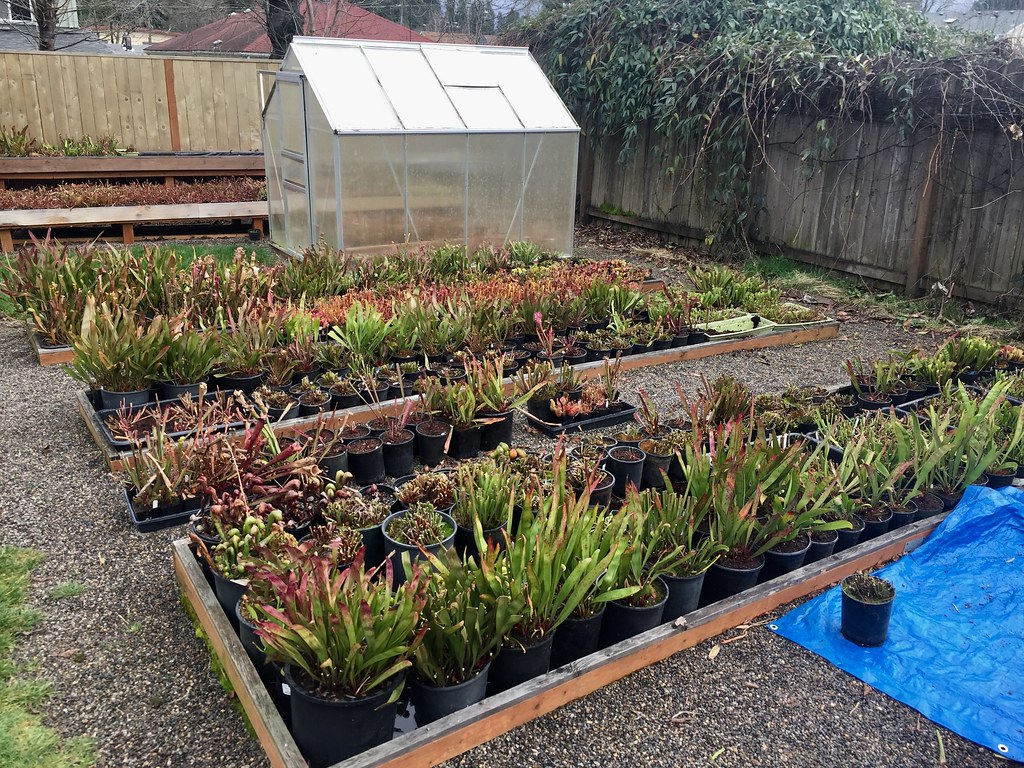 Untitled by Calen Hall, on Flickr
Untitled by Calen Hall, on Flickr
You'l see a lot of green in the photo: I leave 100% of phyllodia on flavas and moorei, trim leucos and alatas all the way down, and cut minors about half way back. Miscellaneous and complex hybrids I treat according to their primary pitchering season: early performers I trim less, late performers I trim more. I want the crowns of the late season performers to start off as open as possible, so that there is still adequate light reaching the rhizome late in the year. On the other hand, plants that will be putting on their biggest effort of the year first thing benefit from the presence of big solar panels to bankroll all that growth without drawing as much starch from the rhizome.
This photo shows what my flavas look like after grooming, but mostly I wanted to showcase the insane morphological diversity in the species. The plant at left is flava "Widemouth" and it has these odd, wide, short, waxy blue phyllodia only a few inches long. On the right is cuprea Giant "Big Cuprea" (gotta come up with a better name lol) which is the physically largest flava clone in the collection. It's like a Chihuahua next to a Great Dane!
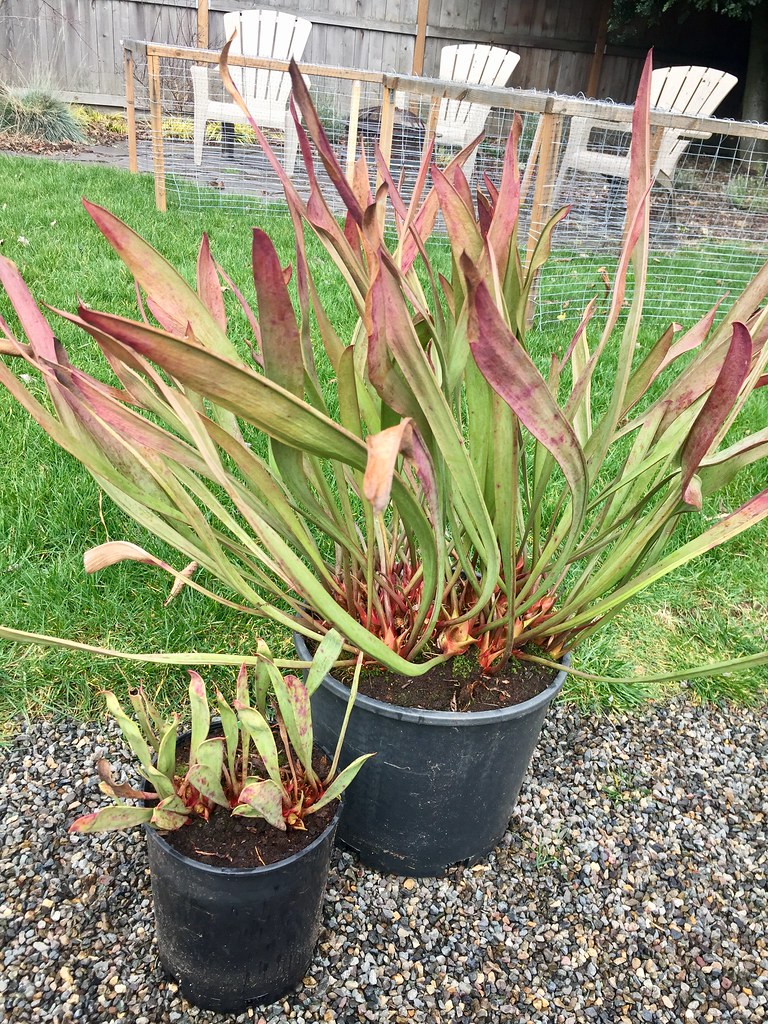 Untitled by Calen Hall, on Flickr
Untitled by Calen Hall, on Flickr
Seedlings trimmed up too! Wasn't as meticulous with these - just gave them a haircut so new traps can come up free and clear.
 Untitled by Calen Hall, on Flickr
Untitled by Calen Hall, on Flickr
Sphagnum does best for me in the partial shade between taller Sarracenia in the community tubs - the dang raccoons also don't find it in here. Oh how they like to dig through live Sphagnum! These Bay Co. ornata / rubricorpora plants are already showing flower buds. It is my hunch that they initiate bud break based on photoperiod, which explains why they are so early up here despite the cold. Subsequent growth of the inflorescence will be regulated by temperature, and these plants won't actually bloom until late April. Bud break is only 2-3 weeks later here compared to northern CA, but bloom time is 4-5 weeks later.
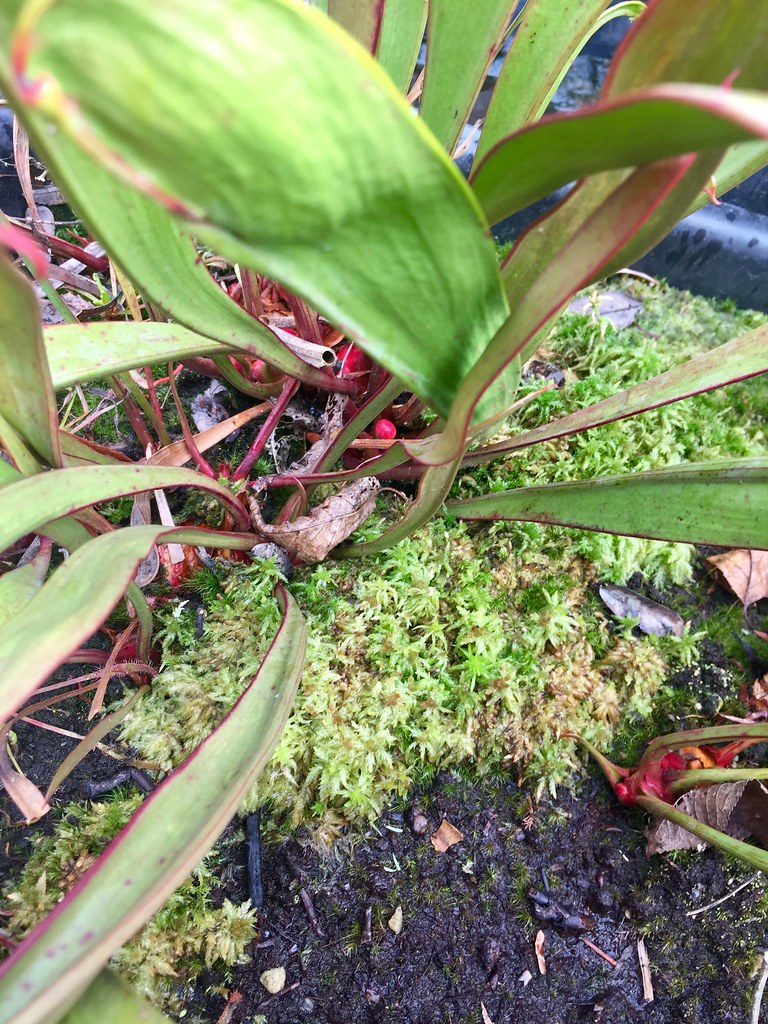 Untitled by Calen Hall, on Flickr
Untitled by Calen Hall, on Flickr
Lastly, Darlingtonia californica looking super colorful from the cold. This is a mountain strain that is mixed red and green in summer (D. c. var. ornata?? lol) and then turns solid red over winter.
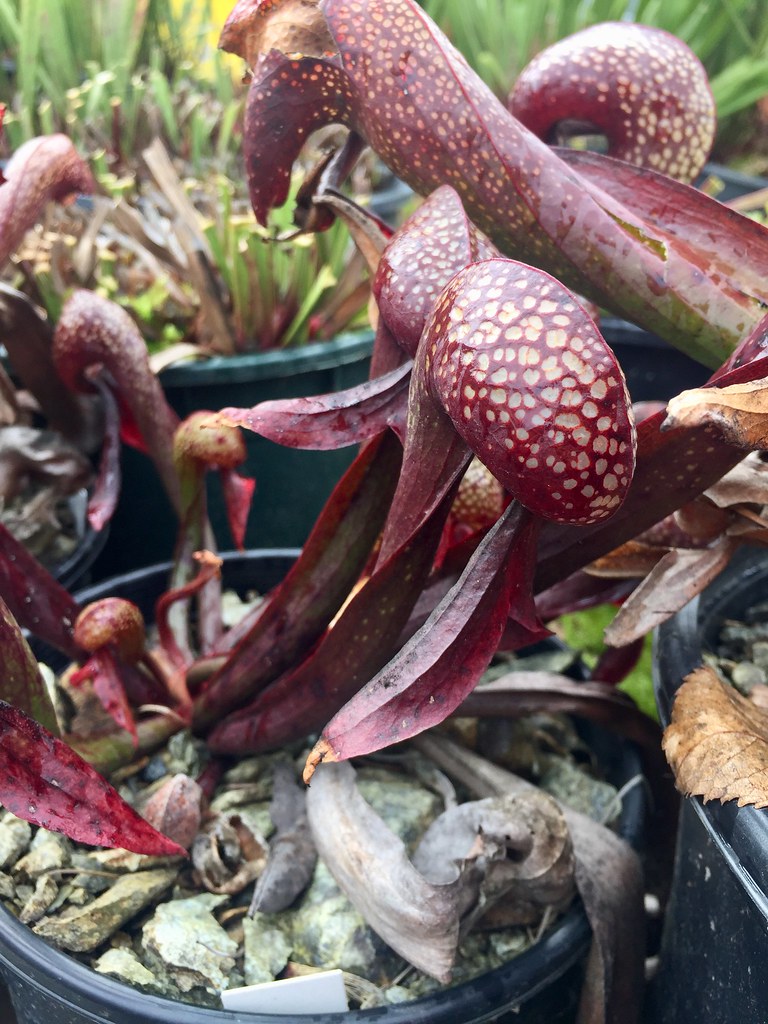 Untitled by Calen Hall, on Flickr
Untitled by Calen Hall, on Flickr
 Untitled by Calen Hall, on Flickr
Untitled by Calen Hall, on FlickrYou'l see a lot of green in the photo: I leave 100% of phyllodia on flavas and moorei, trim leucos and alatas all the way down, and cut minors about half way back. Miscellaneous and complex hybrids I treat according to their primary pitchering season: early performers I trim less, late performers I trim more. I want the crowns of the late season performers to start off as open as possible, so that there is still adequate light reaching the rhizome late in the year. On the other hand, plants that will be putting on their biggest effort of the year first thing benefit from the presence of big solar panels to bankroll all that growth without drawing as much starch from the rhizome.
This photo shows what my flavas look like after grooming, but mostly I wanted to showcase the insane morphological diversity in the species. The plant at left is flava "Widemouth" and it has these odd, wide, short, waxy blue phyllodia only a few inches long. On the right is cuprea Giant "Big Cuprea" (gotta come up with a better name lol) which is the physically largest flava clone in the collection. It's like a Chihuahua next to a Great Dane!
 Untitled by Calen Hall, on Flickr
Untitled by Calen Hall, on FlickrSeedlings trimmed up too! Wasn't as meticulous with these - just gave them a haircut so new traps can come up free and clear.
 Untitled by Calen Hall, on Flickr
Untitled by Calen Hall, on FlickrSphagnum does best for me in the partial shade between taller Sarracenia in the community tubs - the dang raccoons also don't find it in here. Oh how they like to dig through live Sphagnum! These Bay Co. ornata / rubricorpora plants are already showing flower buds. It is my hunch that they initiate bud break based on photoperiod, which explains why they are so early up here despite the cold. Subsequent growth of the inflorescence will be regulated by temperature, and these plants won't actually bloom until late April. Bud break is only 2-3 weeks later here compared to northern CA, but bloom time is 4-5 weeks later.
 Untitled by Calen Hall, on Flickr
Untitled by Calen Hall, on FlickrLastly, Darlingtonia californica looking super colorful from the cold. This is a mountain strain that is mixed red and green in summer (D. c. var. ornata?? lol) and then turns solid red over winter.
 Untitled by Calen Hall, on Flickr
Untitled by Calen Hall, on Flickr






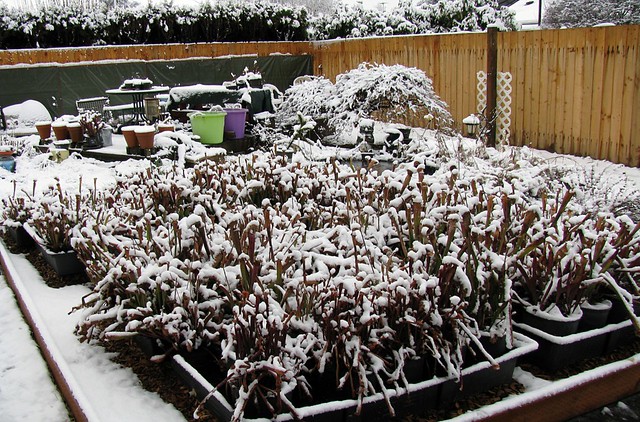

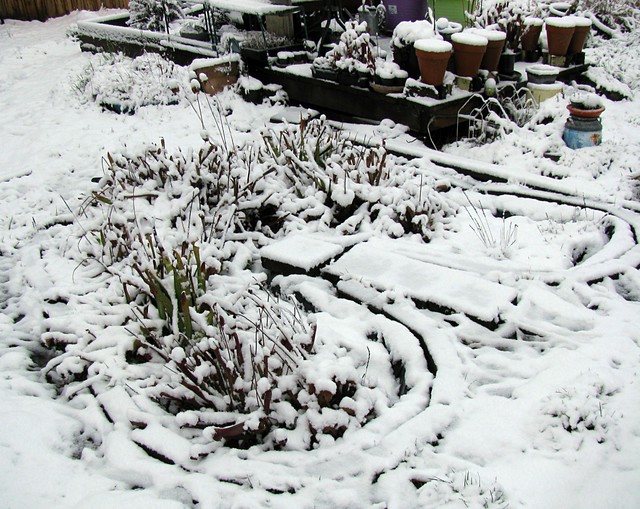
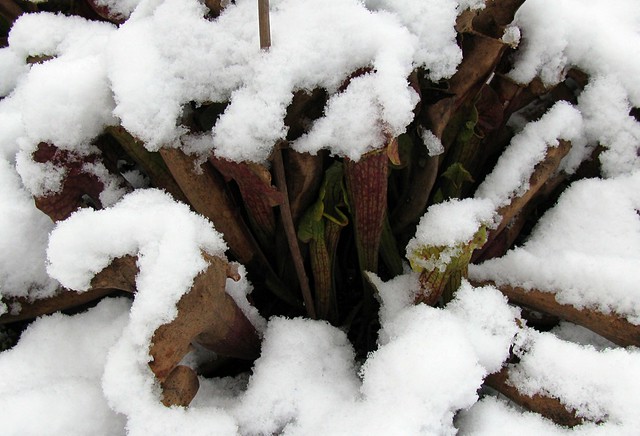

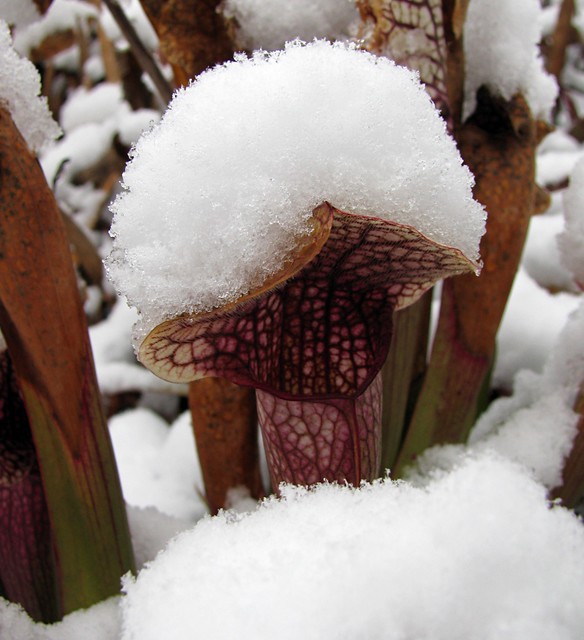
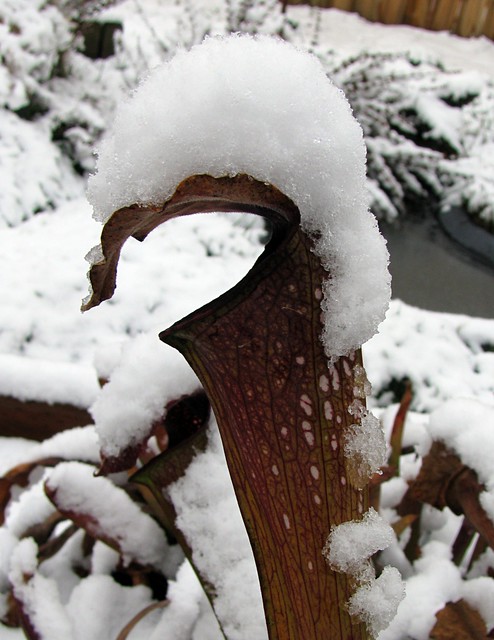
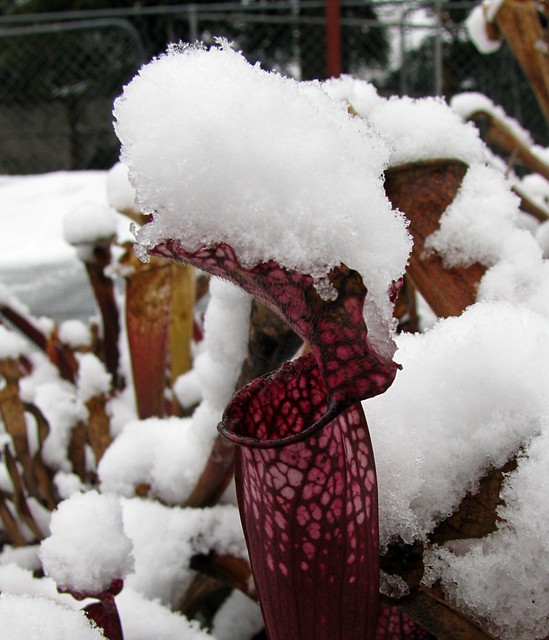
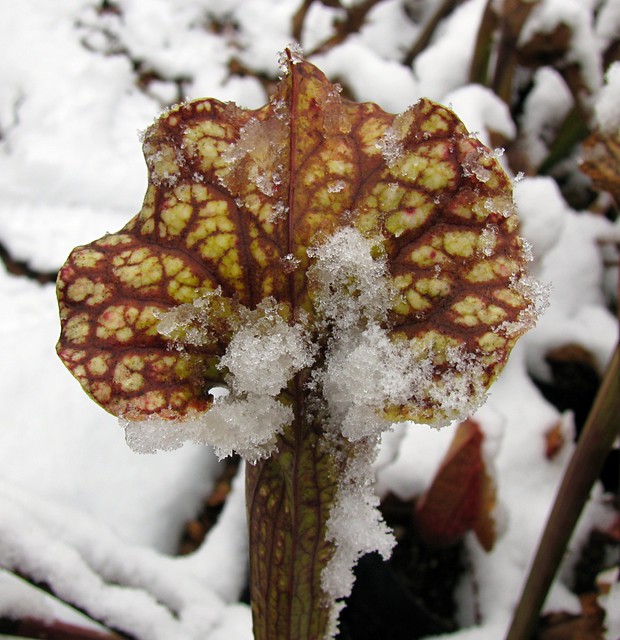


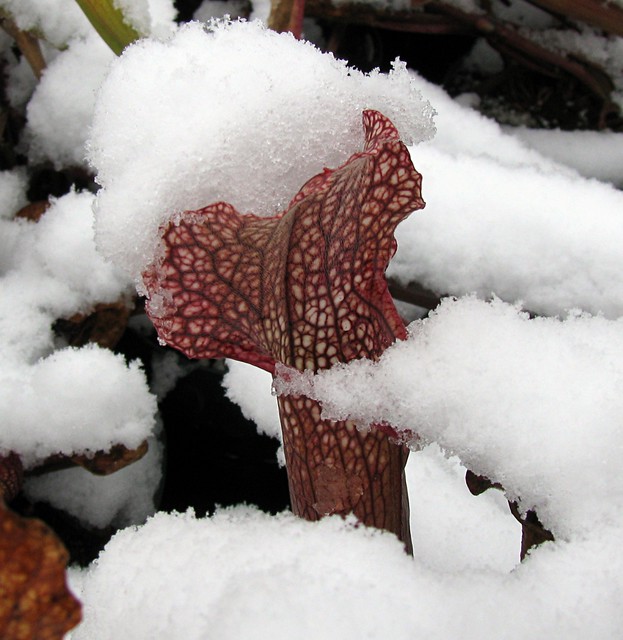
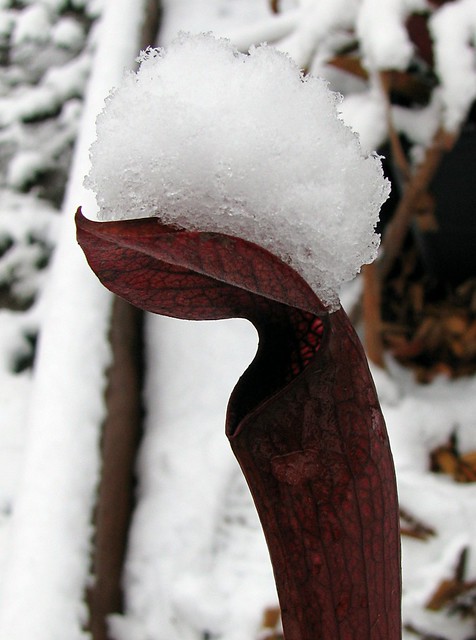
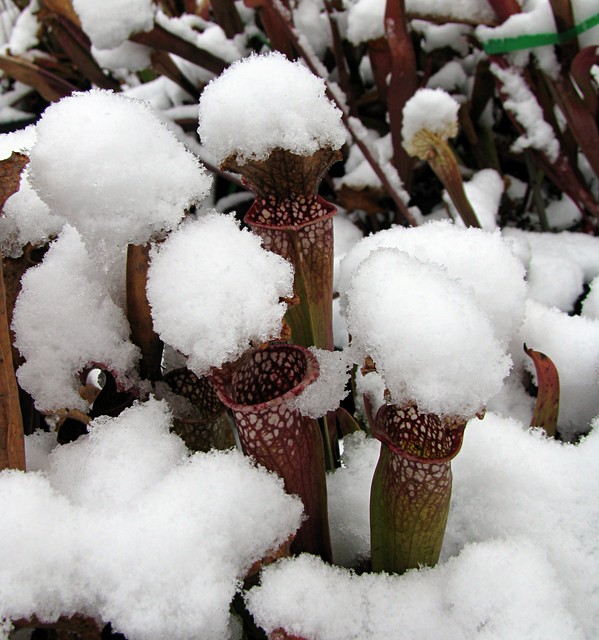
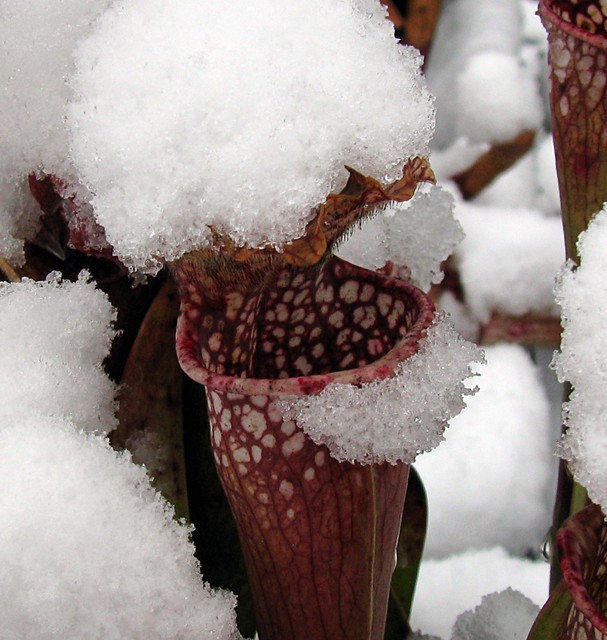
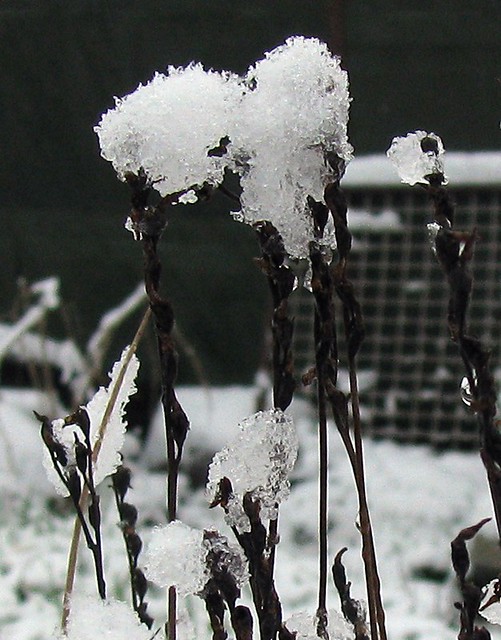
 Here are images of plant progress on 03/16/2023
Here are images of plant progress on 03/16/2023